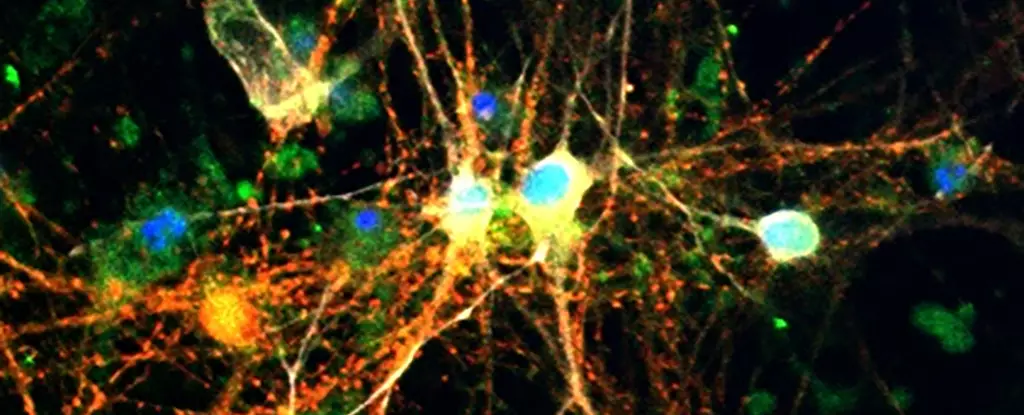For decades, scientists viewed glycogen in the brain as a mere backup energy reserve—an insignificant player compared to its critical role in muscles and the liver. This limited perspective no longer holds up in the face of groundbreaking research that reveals glycogen’s potential involvement in neurodegeneration. The implications of these findings are profound, challenging long-standing assumptions and offering fresh avenues for therapeutic intervention. As an advocate for nuanced scientific inquiry and patient-centered innovation, I see these insights as a pivotal step towards understanding and ultimately combating diseases like Alzheimer’s.
This emerging research turns the traditional narrative upside down by suggesting that glycogen is not just a passive fuel store but an active participant in neurodegenerative processes. The possibility that abnormal glycogen accumulation could directly contribute to neuronal damage demands a reevaluation of our disease models. If glycogen mismanagement plays a role in tauopathies, then the scope of therapeutic strategies should expand beyond focusing solely on tau protein aggregation. The brain’s metabolic landscape, particularly glycogen regulation, might hold the key to unlocking much-needed breakthroughs in neurodegenerative treatments.
New Evidence of Glycogen’s Intricate Relationship with Tau Protein Pathology
The significance of this research lies in its demonstration that tau proteins interfere with glycogen metabolism, leading to harmful accumulations that exacerbate neuronal damage. Previously, the role of tau proteins was viewed almost exclusively through their aggregation’s direct effects. Now, it appears that tau may indirectly damage neurons by disrupting the delicate balance of energy and storage within them. This insight underscores a complex, multifaceted disease process that demands holistic interventions.
Animal models, notably in fruit flies, have shown that reducing glycogen buildup through the activation of glycogen phosphorylase (GlyP)—the enzyme responsible for breaking down glycogen—can mitigate damage. This suggests that metabolic reprogramming, specifically targeting glycogen processing, has tangible neuroprotective effects. Crucially, the research demonstrates that increasing GlyP activity not only reduces glycogen stores but also enhances neuronal resilience, partly by improving the clearance of reactive oxygen species that contribute to oxidative stress.
The clinical implications are compelling. If these findings translate to humans, they may pave the way for pharmacological or dietary interventions that restore glycogen metabolism, potentially slowing or halting disease progression. The possibility of extending this approach to existing drugs—like GLP-1 receptor agonists—could accelerate the development of treatments that leverage already-approved medications, offering hope for millions affected by neurodegenerative conditions.
Diet, Drugs, and the Future of Neurodegeneration Therapy
The researchers’ experiments with dietary restriction and drug mimetics highlight the malleability of brain glycogen management. A low-protein diet extended lifespan and reduced neural damage in tauopathy-affected fruit flies, underscoring the interplay between metabolism and neurodegeneration. These findings are particularly relevant in a society increasingly interested in lifestyle modifications to promote healthy aging.
But perhaps more exciting is the potential for pharmaceutical interventions that mimic dietary effects without requiring drastic lifestyle changes. The design of molecules like 8-Br-cAMP to influence glycogen metabolism exemplifies this approach. Moreover, the connection to existing diabetes drugs—such as Ozempic—opens a promising avenue for drug repurposing. These medications, already targeting metabolic pathways, might offer dual benefits by also protecting neurons from tau-related damage.
The broader implication is that we must expand our understanding of neurodegeneration beyond mere protein misfolding. It’s time to view these diseases through a metabolic lens—where energy regulation, glycogen storage, and enzyme activity are as critical as protein aggregation. Therapeutic strategies that integrate metabolic and neurological insights could finally deliver on the promise of more effective treatments, improving quality of life and lifespan in our aging population.
The old paradigm of viewing glycogen as a minor player in brain health is fundamentally flawed. We are at the brink of a paradigm shift—one where metabolic pathways are recognized as central to neurodegenerative disease progression and treatment. This insight is not just intellectually exciting; it is a moral imperative to pursue these new avenues for the millions waiting for hope.

